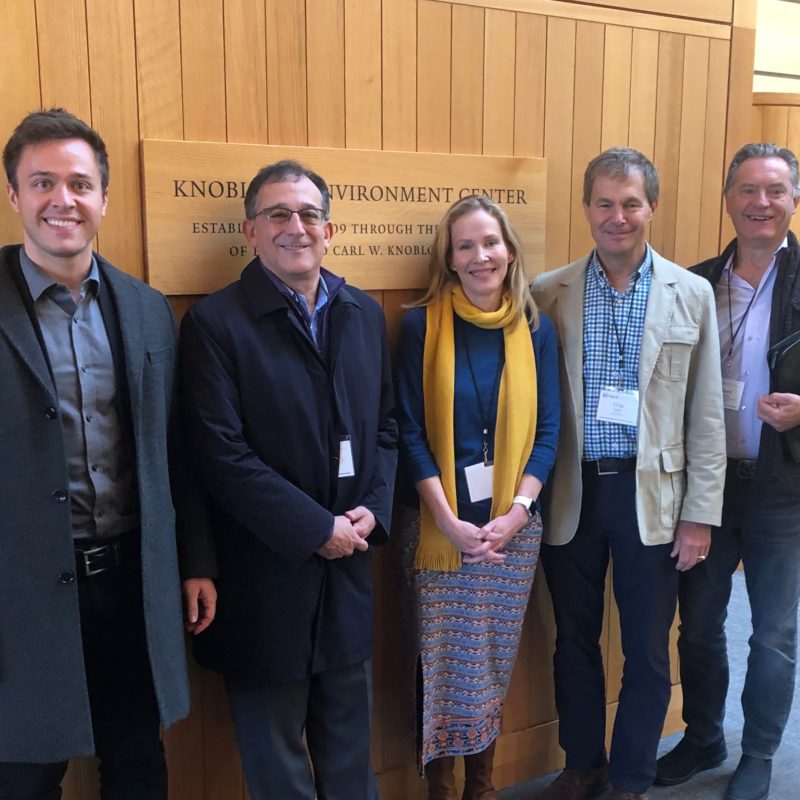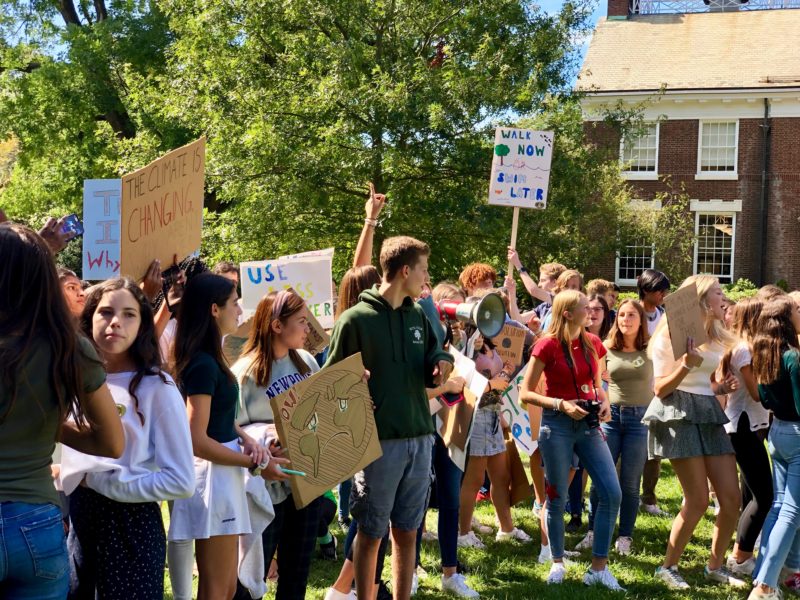Earth Day Turns 50! This big birthday has been on my mind since I participated in a sustainability conference last fall where the theme of our panel was Earth Day at 50.
In preparation for the discussion, panelists were asked to think about what Earth Day means to him or her. Frankly, I’d never thought about Earth Day beyond the organizational obligations of planning eco-friendly activities. Taking a moment to pause and reflect on what the day actually means was a valuable exercise.
To understand more, I spent some time digging into the origins of the Earth Day movement, correcting my misconceptions and contrasting those early days with today’s version. What I’ve discovered is that as Earth Day turns 50, we’re facing unprecedented challenges.
Earth Day 1970: Institutionalized Organization

Earth Day 1970 emerged against the backdrop of an anti-war student activist movement. While it’s tempting to assume (as I did) that Earth Day was the result of a youthful grassroots campaign, it was actually spearheaded through a rare bipartisan partnership between Democratic and Republican lawmakers.
Gaylord Nelson, a Democratic Senator from Wisconsin, horrified by a series of environmental catastrophes that seemingly escaped public outrage and action, was inspired by the success of the youth anti-war movement to replicate a similar movement for environmental protection. The idea was a national “teach-in on the environment” to raise public awareness about air and water pollution. To achieve this goal, Nelson reached across the aisle to Republican Congressman, Pete McCloskey.
This background is important because it underscores the institutional underpinnings of that first Earth Day. The motivating force of the first celebration wasn’t a pack of young activists, but seasoned legislators. Even the day, April 22nd, was carefully orchestrated to fit within this institutional framework: Occurring during college spring break, Nelson selected that day to ensure maximum student participation.
This top-down organizational foundation worked in an era before the politicization of the environment set in. The first Earth Day was an enormous success not simply because of the impressive nationwide turnout. It was more than just a celebration: it was the catalyst for the formation of the EPA and the passage of the Clean Air, Clean Water, and Endangered Species Acts.
Now imagine Republican and Democratic lawmakers working today to organize and lead an environmental summit. It’s a fantasy. In our current highly charged world of reluctant politicians, well-funded lobbyists, and influential climate deniers, we must look to other instigators for substantive change.
Earth Day Turns 50: A Grassroots Movement

Earth Day 2020 comes as we face an unprecedented planetary crisis. Our major institutions are paralyzed (some willfully so) to lead the charge, and we can’t depend on policymakers at the national (and sometimes state) level. Instead, it’s up to us – individuals and grassroots organizations – to shape a new Earth Day movement.
It’s fitting that the theme for this year’s Earth Day is climate action. Action is critical. It underscores the call for progress instead of mere environmental celebration. The key to effective action, however, is the use of unconventional tactics. Instead of waiting for traditional organizations and institutions to institute structural and systemic changes, it’s up to smaller localized groups — acting alone or in loose coalitions — to lead the way in pressing for reforms from the local level and beyond.
This grassroots approach targets local communities, energizing people to pressure for change. While this strategy is small-scale and seemingly disjointed, it works through customized, targeted campaigns that bypass the politicized web of larger, institutionalized initiatives. It’s messier and a probably more laborious endeavor, but one that, when successful, achieves cultural transformation within communities.
I’ve experienced the success of this grassroots approach firsthand by leading our town’s sustainability group to help transform our community into one that’s considered a model of sustainability. But don’t just take my word for it. Environmental activism’s bottom-up approach works elsewhere. New York’s Climate Leadership & Community Protection Act, the most comprehensive climate action legislation in the nation, was the culmination of years of advocacy from numerous local groups. At the individual level, we need only think of Greta Thunberg and recognize the power of her voice.
Do we need supra-local (i.e., regional, national, global) activism? Of course. But the money and politicization of the environmental movement at the higher level have thwarted leadership at these levels. We must step into this void to spur action and influence policymaking.
Earth Day Turns 50 … What Can You Do?

So Earth Day turns 50. What can you do to make the day meaningful? Don’t wait for April 22nd. Start now, even if you’re housebound.
Start a Movement in Your Community
By “communities,” I mean neighborhoods, organizations, municipalities, friendship groups, families – groups where you have a connection and your voice is heard. Pick a topic (or two) that resonates with your group. With my sustainability group, we began with a reusable bag initiative, which eventually morphed into a full-blown plastic bag ban campaign.
Now that you’ve picked your cause, join forces with like-minded individuals, groups, organizations, and businesses. Those partnerships broaden engagement within your community, but also help spread the message through trusted networks.
After the success of Rye’s plastic bag law, neighboring communities reached out for help with their own campaigns. In a matter of a few short years, multiple towns had passed similar laws with the County Board eventually drafting legislation. In March, New York state will pass a statewide ban.
Even if you’re not (yet!) ready to start a movement, you can make personal changes that protect the environment. My post on Easy Earth Day Tips will help get you started.









